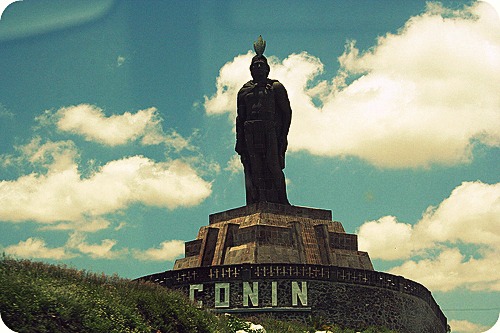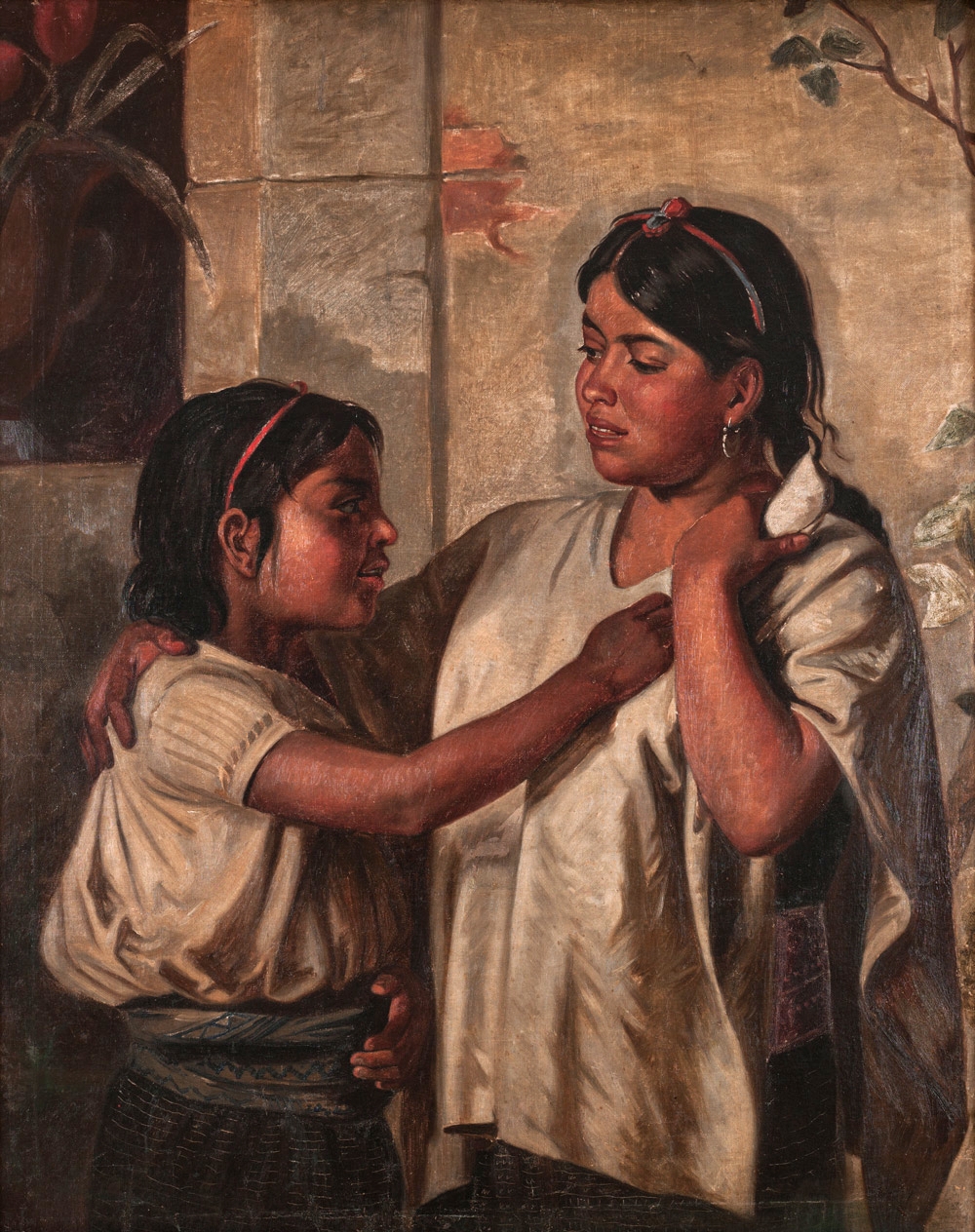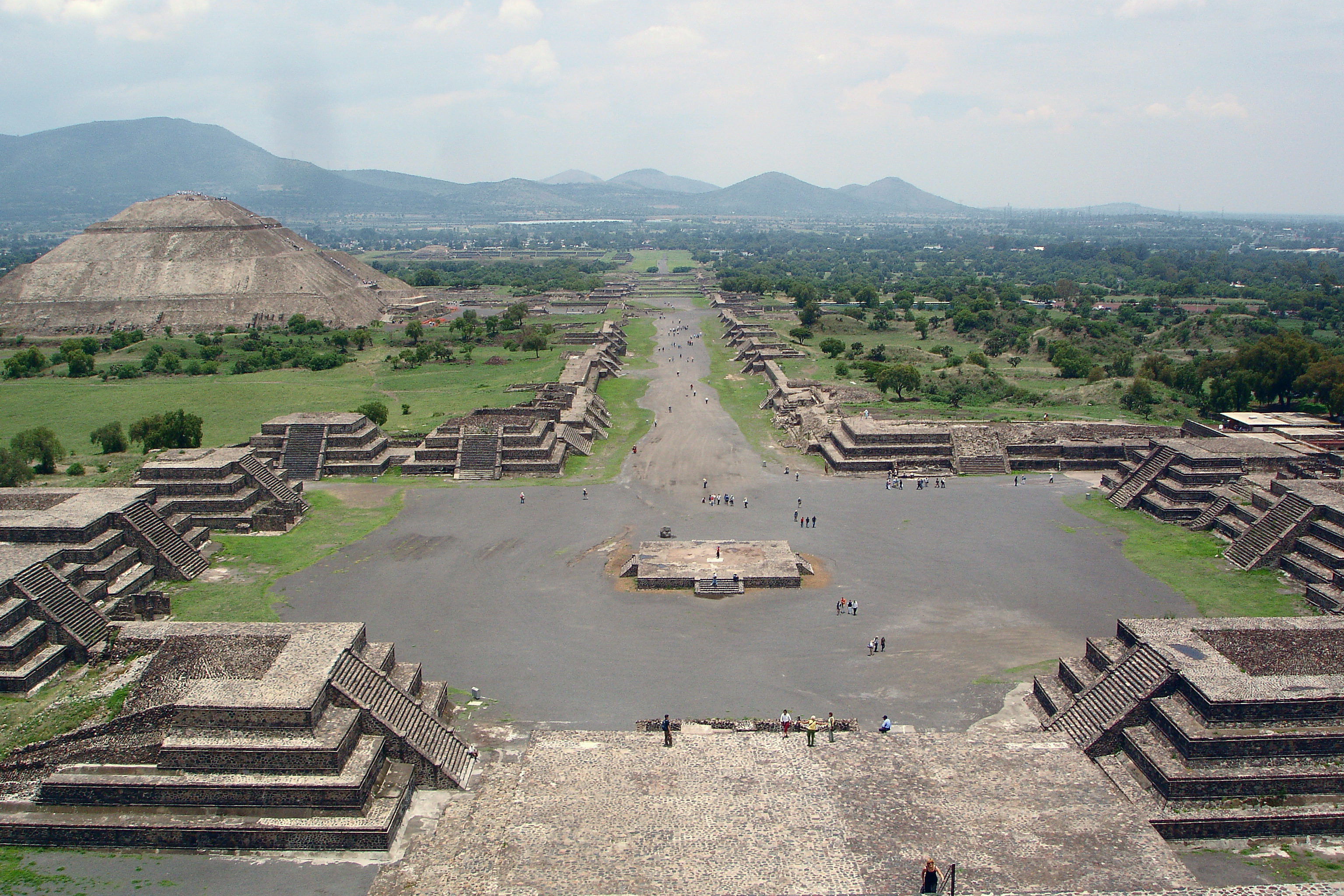|
Otomi
The Otomi (; es, Otomí ) are an indigenous people of Mexico inhabiting the central Mexican Plateau (Altiplano) region. The Otomi are an indigenous people of Mexico who inhabit a discontinuous territory in central Mexico. They are linguistically related to the rest of the Otomanguean-speaking peoples, whose ancestors have occupied the Trans-Mexican Volcanic Belt since several millennia before the Christian era. Currently, the Otomi inhabit a fragmented territory ranging from northern Guanajuato, to eastern Michoacán and southeastern Tlaxcala. However, most of them are concentrated in the states of Hidalgo, Mexico and Querétaro. According to the National Institute of Indigenous Peoples of Mexico, the Otomi ethnic group totaled 667,038 people in the Mexican Republic in 2015, making them the fifth largest indigenous people in the country. Of these, only a little more than half spoke Otomi. In this regard, it should be said that the Otomi language presents a high degree of interna ... [...More Info...] [...Related Items...] OR: [Wikipedia] [Google] [Baidu] |
Otomi Language
Otomi (; ) is an Oto-Pamean languages, Oto-Pamean language family spoken by approximately 240,000 indigenous Otomi people in the Mexican Plateau, central ''altiplano'' region of Mexico. Otomi consists of several closely related languages, many of which are not mutually intelligible. The word ''Hñähñu'' has been proposed as an endonym, but since it represents the usage of a single dialect, it has not gained wide currency. Linguists have classified the modern dialects into three dialect areas: the Northwestern dialects are spoken in Querétaro, Hidalgo (state), Hidalgo and Guanajuato; the Southwestern dialects are spoken in the Mexico (state), State of Mexico; and the Eastern dialects are spoken in the highlands of Veracruz, Puebla, and eastern Hidalgo and villages in Tlaxcala and Mexico states. Like all other Oto-Manguean languages, Otomi is a tonal language, and most varieties distinguish three tones. Nouns are marked only for possessor; the plural number is marked with a d ... [...More Info...] [...Related Items...] OR: [Wikipedia] [Google] [Baidu] |
Oto-Manguean Languages
The Oto-Manguean or Otomanguean languages are a large family comprising several subfamilies of indigenous languages of the Americas. All of the Oto-Manguean languages that are now spoken are indigenous to Mexico, but the Manguean branch of the family, which is now extinct, was spoken as far south as Nicaragua and Costa Rica. Oto-Manguean is widely viewed as a proven language family. However, this status has been recently challenged. The highest number of speakers of Oto-Manguean languages today are found in the state of Oaxaca where the two largest branches, the Zapotecan and Mixtecan languages, are spoken by almost 1.5 million people combined. In central Mexico, particularly in the states of Mexico, Hidalgo and Querétaro, the languages of the Oto-Pamean branch are spoken: the Otomi and the closely related Mazahua have over 500,000 speakers combined. Some Oto-Manguean languages are moribund or highly endangered; for example, Ixcatec and Matlatzinca each has fewer than 250 ... [...More Info...] [...Related Items...] OR: [Wikipedia] [Google] [Baidu] |
Querétaro
Querétaro (), officially the Free and Sovereign State of Querétaro ( es, Estado Libre y Soberano de Querétaro, links=no; Otomi language, Otomi: ''Hyodi Ndämxei''), is one of the Political divisions of Mexico, 32 federal entities of Mexico. It is divided into Municipalities of Querétaro, 18 municipalities. Its capital city is Santiago de Querétaro. It is located in north-central Mexico, in a region known as Bajío. It is bordered by the states of San Luis Potosí to the north, Guanajuato to the west, Hidalgo (state), Hidalgo to the east, State of Mexico, México to the southeast and Michoacán to the southwest. The state is one of the smallest in Mexico, but also one of the most heterogeneous geographically, with ecosystems varying from deserts to tropical rainforest, especially in the Sierra Gorda, which is filled with microecosystems. The area of the state was located on the northern edge of Mesoamerica, with both the Purépecha Empire and Aztec Empire having influence in ... [...More Info...] [...Related Items...] OR: [Wikipedia] [Google] [Baidu] |
Mezquital Valley
The Mezquital Valley ( ote, B’ot’ähi) is a series of small valleys and flat areas located in Central Mexico, about north of Mexico City, located in the western part of the state of Hidalgo. It is part of the Trans-Mexican Volcanic Belt, with altitudes between and above sea level. It is one of Mexico's main semi-arid/area regions, whose native vegetation is dominated by cactus species, mesquite trees, and maguey with pine and oak trees in the highest elevations. It is considered to be part of the northern extension of Mesoamerica, with one major archeological site, Tula, which was the main city of the Toltecs, an important influence for the later Aztecs. However, from the Aztec period to the 20th century, it was sparsely populated and very poor, with one main indigenous ethnicity, the Otomis. In the 20th century, irrigation works were created to take advantage of the water in the Tula River, along with wastewater drained from the Valley of Mexico for agriculture. Today the ... [...More Info...] [...Related Items...] OR: [Wikipedia] [Google] [Baidu] |
Querétaro City
Santiago de Querétaro (; Otomi: Dähnini Maxei), known simply as Querétaro City ( es, Ciudad de Querétaro), is the capital and largest city of the state of Querétaro, located in central Mexico. It is part of the macroregion of Bajío. It is northwest of Mexico City, southeast of San Miguel de Allende and south of San Luis Potosí. It is also the seat of the municipality of Querétaro, divided into seven boroughs. In 1996, the historic center of Querétaro was declared a World Heritage Site by the UNESCO. The city is a strong business and economic center and a vigorous service center that is experiencing an ongoing social and economic revitalization. All this has resulted in high levels of migration from other parts of Mexico. Querétaro has seen outstanding industrial and economic development since the mid-1990s. Querétaro metropolitan area has the 2nd highest GDP per capita among Mexico's metropolitan areas with US$20,000 after Monterrey. The city is the fastest-growing i ... [...More Info...] [...Related Items...] OR: [Wikipedia] [Google] [Baidu] |
Hidalgo (state)
Hidalgo (), officially the Free and Sovereign State of Hidalgo ( es, Estado Libre y Soberano de Hidalgo) is one of the 31 states which, along with Mexico City, constitute the 32 federal entities of Mexico. It is divided into 84 municipalities and its capital city is Pachuca de Soto. Located in the eastern part of the country, Hidalgo is bordered by San Luis Potosí and Veracruz on the north, Puebla on the east, Tlaxcala and State of Mexico on the south and Querétaro on the west. In 1869, Benito Juárez created the State of Hidalgo and made Pachuca its capital city; Juárez would add the name ''"de Soto"'' in recognition of Manuel Fernando Soto, who is considered the most important driving force in creating the state. The state was named after Miguel Hidalgo y Costilla, the initiator of the Mexican War of Independence. The indigenous peoples of the state, such as the Otomi, retain much of their traditional culture. In addition to Mexicans of Spanish descent, there are also n ... [...More Info...] [...Related Items...] OR: [Wikipedia] [Google] [Baidu] |
Indigenous People Of Mexico
Indigenous peoples of Mexico ( es, gente indígena de México, pueblos indígenas de México), Native Mexicans ( es, nativos mexicanos) or Mexican Native Americans ( es, pueblos originarios de México, lit=Original peoples of Mexico), are those who are part of communities that trace their roots back to populations and communities that existed in what is now Mexico before the arrival of the Spanish. The number of indigenous Mexicans is defined through the second article of the Constitution of Mexico, Mexican Constitution. The Censo General de Población y Vivienda, Mexican census does not classify individuals by race, using the Culture, cultural-Ethnic group, ethnicity of indigenous communities that preserve their Indigenous language, indigenous languages, traditions, beliefs, and cultures. According to the National Indigenous Institute (INI) and the National Institute of Indigenous Peoples (CDI), in 2012 the indigenous population was approximately 15 million people, divided into ... [...More Info...] [...Related Items...] OR: [Wikipedia] [Google] [Baidu] |
Guanajuato
Guanajuato (), officially the Free and Sovereign State of Guanajuato ( es, Estado Libre y Soberano de Guanajuato), is one of the 32 states that make up the Federal Entities of Mexico. It is divided into 46 municipalities and its capital city is Guanajuato. Guanajuato is in central Mexico. It is bordered by the states of Jalisco to the west, Zacatecas to the northwest, San Luis Potosí to the north, Querétaro to the east, and Michoacán to the south. It covers an area of . The state is home to several historically important cities, especially those along the "Bicentennial Route", which retraces the path of Miguel Hidalgo y Costilla's insurgent army at the beginning of the Mexican War of Independence. This route begins at Dolores Hidalgo, and passes through the Sanctuary of Atotonilco, San Miguel de Allende, Celaya, and the capital of Guanajuato. Other important cities in the state include León, the state's biggest city, Salamanca, and Irapuato. The first town established ... [...More Info...] [...Related Items...] OR: [Wikipedia] [Google] [Baidu] |
Pahuatlán
Pahuatlán (), officially Pahuatlán del Valle, is a town and municipality located in the northwest of the state of Puebla in central Mexico. The municipality is part of the Sierra Norte region of the state, a steep mountainous area which receive significant moisture from the Gulf of Mexico, and borders the states of Hidalgo and Veracruz. The town was founded by the Augustinians when they built a small monastery here in 1532, with the area divided among ethnic Nahuas and Otomis, both of which can still be found here today. Culturally, the municipality is best known for the amate bark paper which is produced by the Otomis of the San Pablito community. The town The town of Pahuatlán is located on a small level space on the side of the Ahila Mountain about 1600 meters above sea level in the Sierra Norte mountains of Puebla about fifty km from Tulancingo near the Hidalgo and Veracruz state borders. It is the center of commerce for the municipality of the same name, with a populat ... [...More Info...] [...Related Items...] OR: [Wikipedia] [Google] [Baidu] |
Mexico State
The State of Mexico ( es, Estado de México; ), officially just Mexico ( es, México), is one of the administrative divisions of Mexico, 32 federal entities of the United Mexican States. Commonly known as Edomex (from ) to distinguish it from the name of the whole country, it is the list of Mexican states by population, most populous, as well as the list of Mexican states by population density, most densely populated, state in the country. Located in South-Central Mexico, the state is divided into municipalities of Mexico State, 125 municipalities. The state capital city is Toluca, Toluca de Lerdo ("Toluca"), while its largest city is Ecatepec de Morelos ("Ecatepec"). The State of Mexico surrounds Mexico City on three sides and borders the states of Querétaro and Hidalgo (state), Hidalgo to the north, Morelos and Guerrero to the south, Michoacán to the west, and Tlaxcala and Puebla to the east. The territory that now comprises the State of Mexico once formed the core of the Pr ... [...More Info...] [...Related Items...] OR: [Wikipedia] [Google] [Baidu] |
Mexico (state)
The State of Mexico ( es, Estado de México; ), officially just Mexico ( es, México), is one of the 32 federal entities of the United Mexican States. Commonly known as Edomex (from ) to distinguish it from the name of the whole country, it is the most populous, as well as the most densely populated, state in the country. Located in South-Central Mexico, the state is divided into 125 municipalities. The state capital city is Toluca de Lerdo ("Toluca"), while its largest city is Ecatepec de Morelos ("Ecatepec"). The State of Mexico surrounds Mexico City on three sides and borders the states of Querétaro and Hidalgo to the north, Morelos and Guerrero to the south, Michoacán to the west, and Tlaxcala and Puebla to the east. The territory that now comprises the State of Mexico once formed the core of the Pre-Hispanic Aztec Empire. During the Spanish colonial period, the region was incorporated into New Spain. After gaining independence in the 19th century, Mexico City w ... [...More Info...] [...Related Items...] OR: [Wikipedia] [Google] [Baidu] |
Puebla
Puebla ( en, colony, settlement), officially Free and Sovereign State of Puebla ( es, Estado Libre y Soberano de Puebla), is one of the 32 states which comprise the Federal Entities of Mexico. It is divided into 217 municipalities and its capital is the city of Puebla. It is located in East-Central Mexico. It is bordered by the states of Veracruz to the north and east, Hidalgo, México, Tlaxcala and Morelos to the west, and Guerrero and Oaxaca to the south. The origins of the state lie in the city of Puebla, which was founded by the Spanish in this valley in 1531 to secure the trade route between Mexico City and the port of Veracruz. By the end of the 18th century, the area had become a colonial province with its own governor, which would become the State of Puebla, after the Mexican War of Independence in the early 19th century. Since that time the area, especially around the capital city, has continued to grow economically, mostly through industry, despite being the scene o ... [...More Info...] [...Related Items...] OR: [Wikipedia] [Google] [Baidu] |




